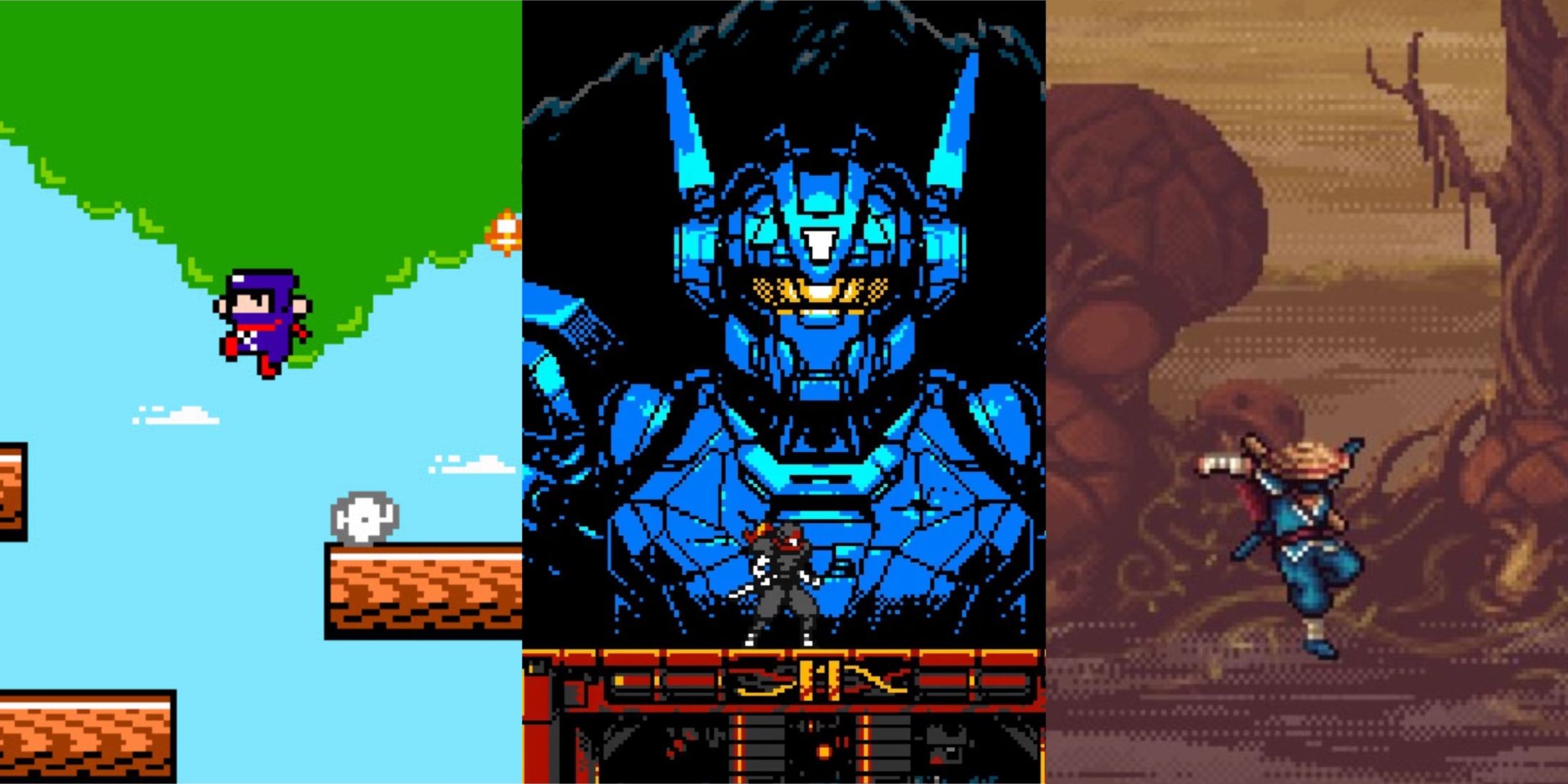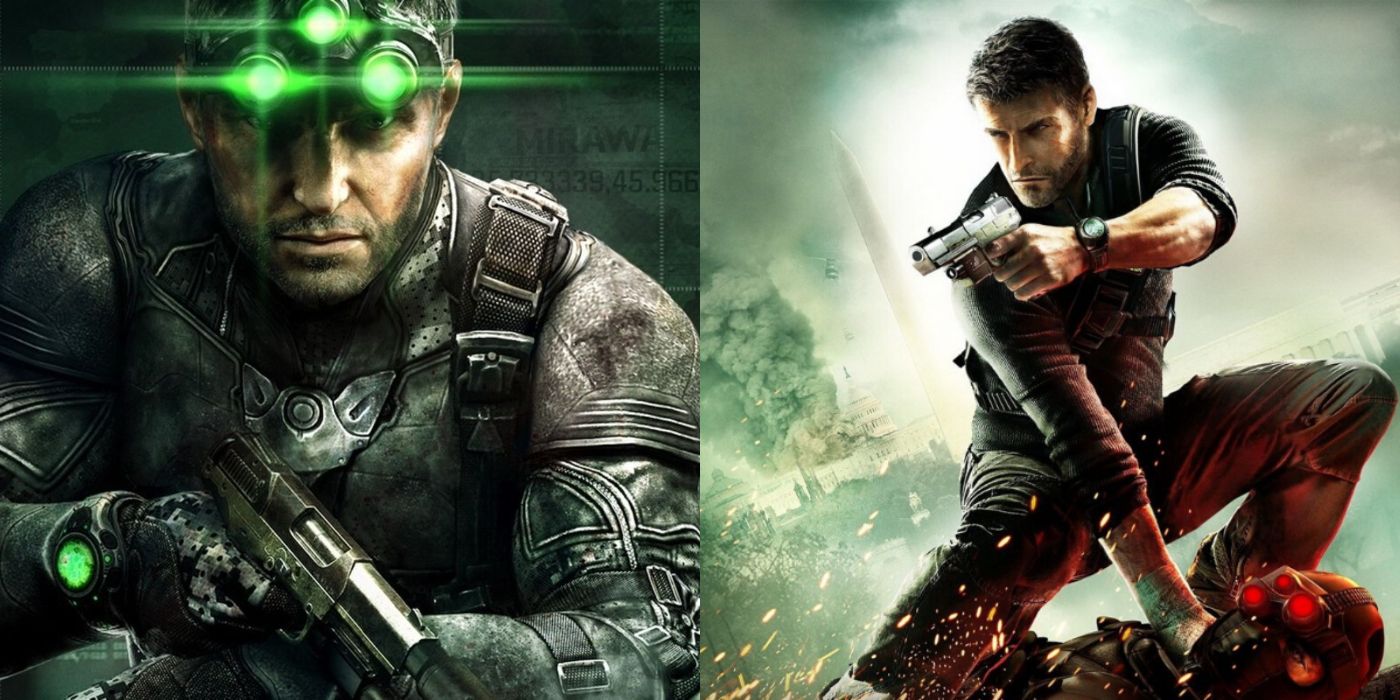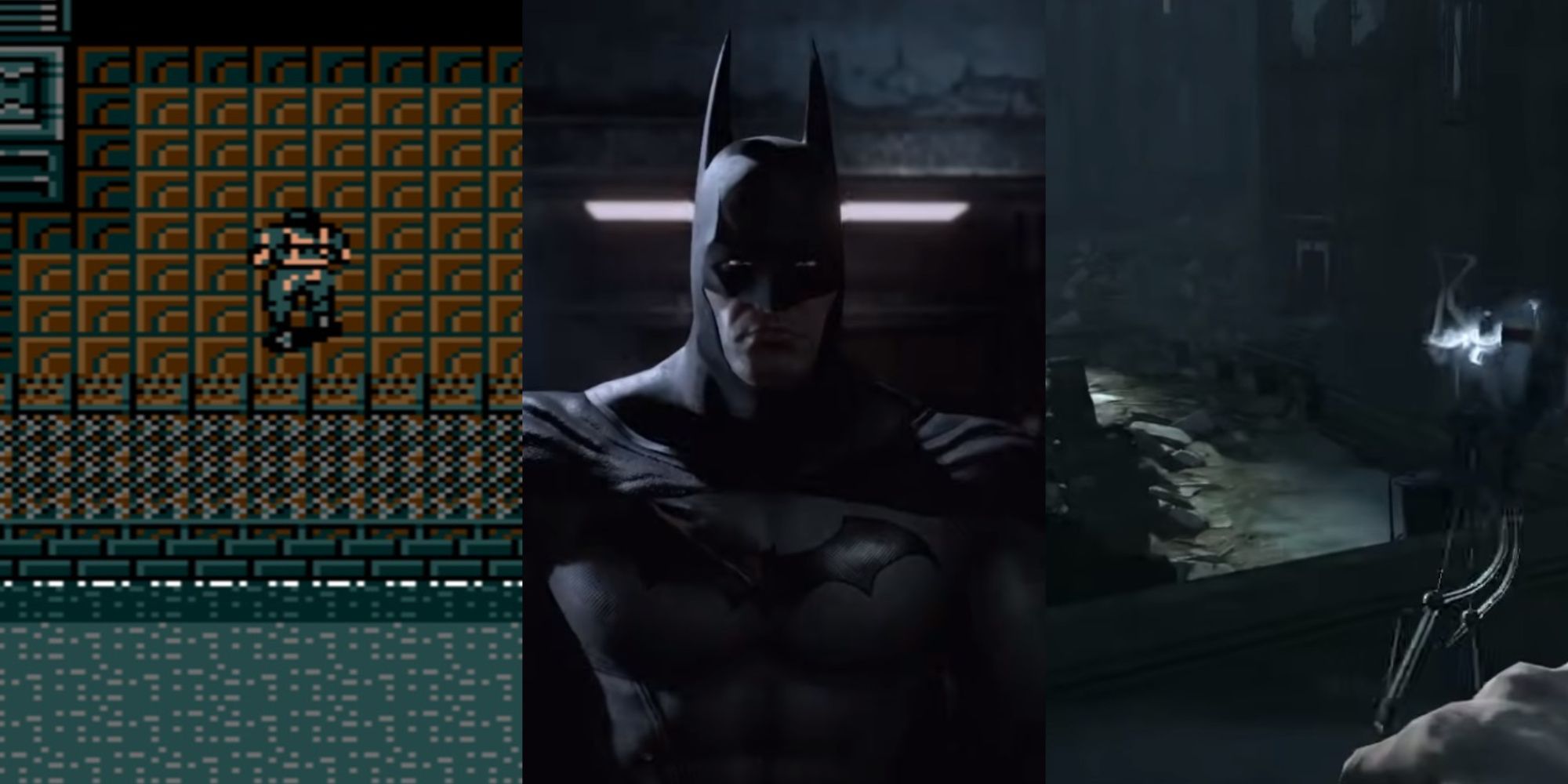Key Takeaways
- Early stealth games like
Castle Wolfenstein
explored evading danger, laying the foundation for the stealth genre. -
Batman: Arkham Asylum
innovated with outstanding stealth systems, adding depth to superhero games. -
Metal Gear
by Hideo Kojima revolutionized the industry with its cinematic stealth experience and storytelling.
As video games started to expand beyond their initial first steps, various different forms started to emerge. Platformers, shoot ’em ups, and RPGs dominated the 1980s, but the focus on action within those particular genres led to developers exploring games built around evading danger.

Related
Best Stealth Games From The 1990s, Ranked
The 1990s were a great time for stealth games, with several legendary titles making their debut during this decade.
Over the years, a lot of outstanding stealth games have emerged from the shadows and shown exactly how innovative and complex this genre can be. Whether it was building systems around functioning shadows and lights, or mechanics that make hiding a more active experience, these stealth games provided radical challenges to the genre and are remembered for their contributions not just to hide-and-seek game design, but to aspects of the entire industry.
8 Castle Wolfenstein
The Debut Title In The Wolfenstein Series Was A Landmark Stealth Release
Castle Wolfenstein
Although the Wolfenstein IP is largely known for its bombastic first-person shooters, it started its life as an Apple II game developed by Muse Software, with development led by the late Silas Warner. Before B.J. Blazkowicz would become the star of the series, this top-down 2D stealth title cast the player as an unnamed member of the Allied Powers attempting to escape the eponymous Castle Wolfenstein.
The castle itself uses procedural generation for all 60 of its floors, and the intimidating escape from the Nazi encampment is still quite a bit of fun today. It is one of the earliest examples of the stealth genre, and even featured voice samples for the Nazi soldiers attempting to capture the player.
7 Batman: Arkham Asylum
An Incredible Stealth Game Based On The Iconic DC Comics Character
Good video games based on comic book characters were a bit hard to come by until the launch of Batman: Arkham Asylum in 2009, but Rocksteady was certainly up to the task and gave the legendary DC Comics superhero one of the absolute best virtual treatments. While a majority of superhero games were built around direct, focused combat and action, Arkham Asylum transported The Dark Knight into a 3D Metroidvania with outstanding stealth systems.
Arkham Asylum tapped into what makes Batman so engaging, casting him as a figure of intimidation and fear, as players creep above enemies and pick them off one by one. With Detective Vision, players were able to see through the eyes of Batman and target enemies directly. This game’s use of fear as a stealth mechanic, as well as its intricately designed map, is still absolutely fantastic to play today and is readily available on modern hardware.
Industry Legend Hideo Kojima Codifies The Stealth Genre
A majority of games during the 1980s were built around action and violence, but in 1987, Hideo Kojima was disillusioned with the industry’s focus on war. A floundering project for the MSX-2 inside Konami was handed to Kojima, who used the limitations of the hardware to create one of the first true stealth games on the market: Metal Gear.

Related
The 25 Best Metal Gear Games, Ranked
Metal Gear has a long, storied history, but which of its games stand the test of time as true classics?
With his keen mind for storytelling and drama, Kojima conceived a game that was radically different from anything else in gaming. Metal Gear introduced elements like a radio for chatter between the player and NPCs, crafting a cinematic stealth experience that was not the norm for games in the 1980s. Its long-lasting legacy would lead to an entire Metal Gear franchise, and the game is currently available on modern hardware thanks to the Metal Gear Master Collection.
5 Manhunt
This Hyper-Violent Stealth Horror Game Broke New Ground
- Released
- November 18, 2003
- Developer(s)
- Rockstar North
Over the years, video games have garnered a reputation for being too violent and not appropriate for children. Like in any form of media, nuance is important and gaming has shown it has many different faces. When it comes to video games being seen as an art form, some games have done it by emulating the shocking violence seen in various films, which is exactly what Rockstar did with Manhunt.
The extreme violence of Manhunt works in perfect tandem with the game’s stealth system, which uses a light and shadow mechanic to hide the player so they can perform grisly executions. The effort to prop video games up as being more than just something for kids has been part of Rockstar’s DNA for years, and Manhunt’s use of absurd violence, wrapped within the framework of a snuff film, was truly an extraordinary design decision that is still worth playing today.
4 Dishonored
A Spiritual Successor To Thief Revitalized The Immersive Sim Genre
The immersive sim genre has seen its share of ups and downs ever since its heyday with the likes of Deus Ex and System Shock, but 2012’s Dishonored was able to revitalize this fascinating genre, setting itself in the fictional city of Dunwall.
Bestowing the player with remarkable abilities and supernatural powers, Dishonored presents a playground for the player to tackle in numerous different ways. The way Dishonored uses these powers is fantastic, as using an ability like Blink to escape immediate detection and shift in and out of the shadows still feels terrific. Dishonored combines powers like Blink with Shadow Kill and Bend Time in ways that still haven’t quite been matched by modern standards, and this masterpiece is still readily available on modern hardware today.
3 Tenchu: Stealth Assassins
This Ninja Stealth Game Was One Of The PS1’s Best
Tenchu: Stealth Assassins
Tenchu is still one of the PS1’s most legendary games, as this stealth adventure game casts the player as either Rikimaru or Ayame, members of the Azuma Clan, in 16th-Century feudal Japan. After its initial tutorial, which teaches the player how to evade enemies and use the game’s robust list of gadgets, Tenchu utilized the PS1 to create one of the industry’s first truly 3D stealth games, even beating Metal Gear Solid to the finish line by eight months.

Related
The Best Retro Ninja Games, Ranked
Modern ninja games that hearken back to the retro aesthetics of the arcade can be a lot of fun, as the following titles illustrate.
The spacious levels allow for the game to have an impressive sense of scale, as traversing these 3D worlds and using gadgets to distract and eliminate enemies felt very fresh for the time. Many games today that feature a character in a 3D world, sneaking around and using in-game tricks to avoid combat, owe quite a bit to Tenchu, as its use of these mechanics was revolutionary at the time. In as many ways as titles like Metal Gear Solid and Syphon Filter defined an era of stealth games, the same can be said for Tenchu.
2 Thief: The Dark Project
A First-Person Stealth Masterpiece
Thief was initially conceived as a twist on the legend of King Arthur, known as Dark Camelot, where Arthur was depicted as a tyrannical dictator in conflict with his son, Mordred. It was later re-worked into Thief: The Dark Project, abandoning its action-focused roots for a stealth game based around shadows and light. Utilizing the impressive Dark Engine, Thief sees players take control of Garret, as they make their way through thirteen missions that were truly revolutionary not just for the stealth genre, but for PC gaming as well.
Using Garret’s trademark blackjack to subdue enemies feels excellent, as they all have razor-sharp senses. Additionally, Thief makes use of shadows, as a light gem at the bottom of the screen indicates how hidden Garret is. This can be altered by putting out torches with water arrows. Garret can also use different types of arrows to traverse the environment, and even modify it to make the master thief move more quietly. Thief spawned several sequels and a reboot, but the original Thief is still one of the stealth genre’s most remarkable titles.
1 Tom Clancy’s Splinter Cell: Chaos Theory
This Innovative Stealth Game Used Impressive Shadow And Light Technology
Tom Clancy’s Splinter Cell: Chaos Theory
Developed as a response to Metal Gear Solid 2, Splinter Cell went on to become one of the stealth genre’s most legendary titles, and did so thanks to some truly remarkable design choices and a sense of heightened reality that the industry is still trying to replicate. Its focus on real-world geopolitical events and organizations is second to none, all of which culminated in what is still an absolutely spectacular entry, Tom Clancy’s Splinter Cell: Chaos Theory.

Related
Every Splinter Cell Game, Ranked According To Metacritic
The Splinter Cell series has its highs and lows. This is what Metacritic has to say about the games.
Making use of everything they learned during the first two games, the team at UbiSoft Montreal crafted an impressive, meticulously designed experience. The shadow and lighting technology was a massive step up, as Sam blended in with them far more convincingly, and more attention was paid to sound as a way for enemies to detect the player. There are elements of Chaos Theory that haven’t been replicated even today, as this magnificent game was one of the most impressive of its generation and remains an incredible stealth experience twenty years later.

More
6 Best Story-Driven Stealth Games
These stealth games deftly intertwine their gameplay mechanics with an engaging story, allowing them both to drive the game forward in tandem.














Leave a Reply